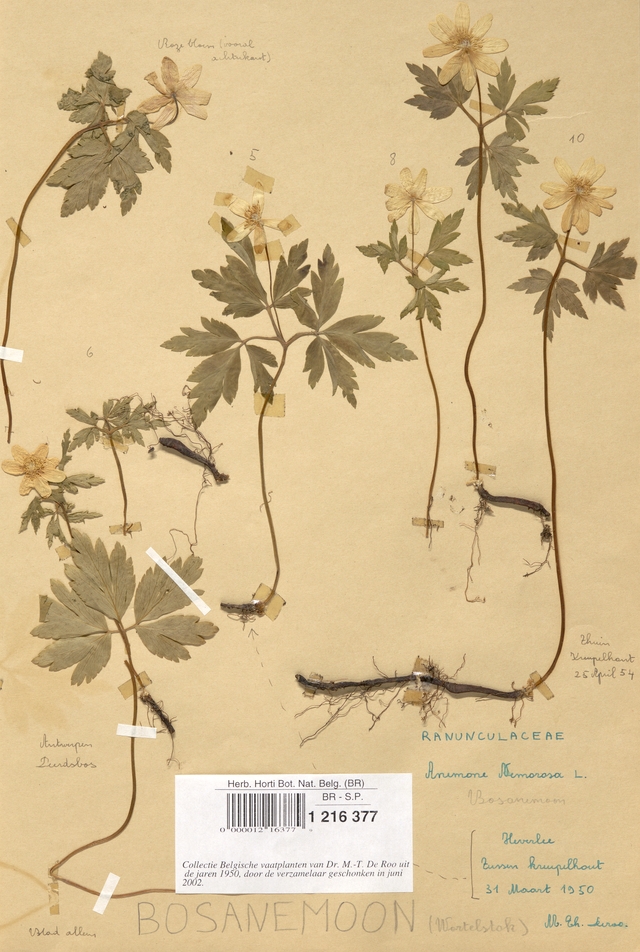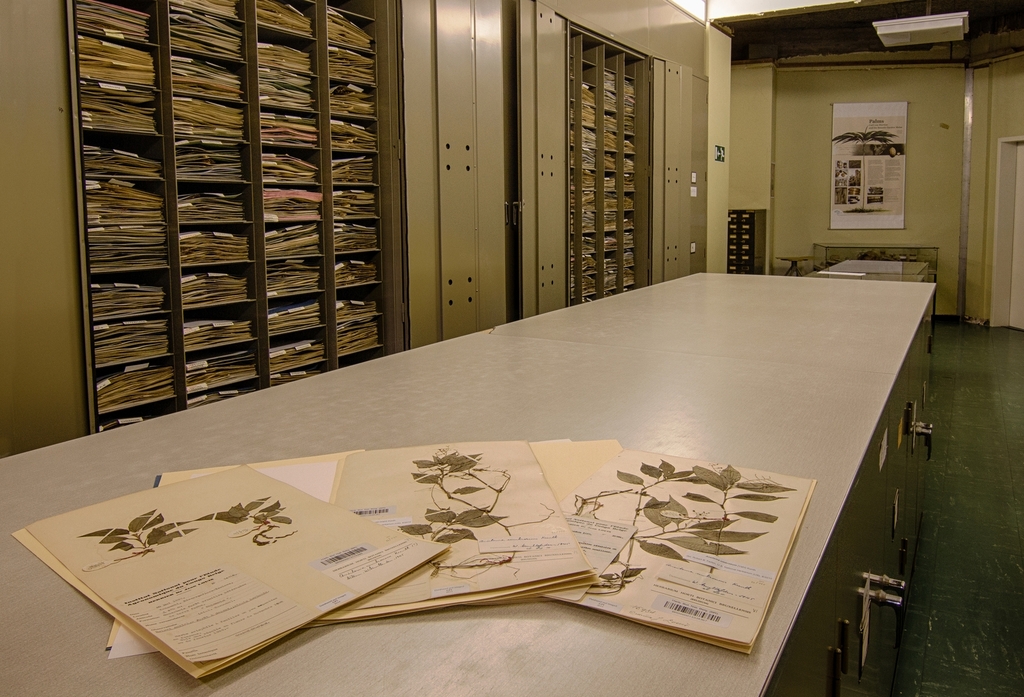[Science News] – FOURCAST in the spotlight: How do plants respond to climate change? 150 years of history in the herbarium
In a previous Science News, we introduced FOURCAST, a study into the effect of climate change on biodiversity in Belgium. Now we will delve deeper into the herbarium research, one of the sub-researches in which Meise Botanic Garden is taking the lead. Plant experts want to predict for which plant species climate change poses the biggest threat in order to be able to act proactively.
How do they do that? They compare contemporary plants with specimens that are up to 150 years old from the extensive herbarium of Meise Botanic Garden. In this way they observe the changes that plants may have undergone over the past century and a half. The RMI makes detailed historical climate data available to make the link with climate change.
Botanical treasure trove
 The herbarium of Meise Botanic Garden contains 4 million specimens, making it the largest in Belgium and the 15th largest herbarium worldwide. In 1871, politician and botanist Barthélemy Dumortier took the initiative to create a collection under the management of Meise Botanic Garden, at that time still the National Botanic Garden or Jardin Botanique de l'État. It started with the purchase of a private collection of 300,000 specimens, many from Brazil. In addition to the Belgian flora, the focus was first on South America, then on Africa, under the influence of the Belgian colonization of Congo.
The herbarium of Meise Botanic Garden contains 4 million specimens, making it the largest in Belgium and the 15th largest herbarium worldwide. In 1871, politician and botanist Barthélemy Dumortier took the initiative to create a collection under the management of Meise Botanic Garden, at that time still the National Botanic Garden or Jardin Botanique de l'État. It started with the purchase of a private collection of 300,000 specimens, many from Brazil. In addition to the Belgian flora, the focus was first on South America, then on Africa, under the influence of the Belgian colonization of Congo.
Ann Bogaerts, head of the herbarium: “In addition to 500,000 Belgian specimens, the herbarium contains specimens from all over the world. The oldest specimen dates from 1724. Many plant species are represented from 1850 onwards. Dried plants are glued to paper and stored in folders and can be kept for a long time.” The specimens are housed in cabinets in seven large collection rooms and are organized alphabetically by family. Within each family there is a further organization by genus, species, country and collector. Three of the four million specimens have now also been digitized and can be consulted online via botanicalcollections.be. Volunteers contribute to the digitization via the citizen science platform DoeDat.
“The herbarium continues to grow with an average of 15,000 specimens per year,” continues Ann. “Our own researchers supplement the collection. Universities and hobbyists also donate their specimens. Or we exchange our 'doubles' with other herbaria.”
Methodology
 Filip Vandelook is director of research at Meise Botanic Garden and coordinates the FOURCAST project. “We will select 10 to 20 plant species for the research project. Diversity plays an important role: does the species occur in the forest, on fields, on heathland, etc. In addition, the number of available samples from the herbarium is a benchmark: 200 to 300 samples per species are needed to account for 'noise'. Finally, the suitability to perform analyzes also plays a role in the selection process. For example, a hairy leaf complicates the process.”
Filip Vandelook is director of research at Meise Botanic Garden and coordinates the FOURCAST project. “We will select 10 to 20 plant species for the research project. Diversity plays an important role: does the species occur in the forest, on fields, on heathland, etc. In addition, the number of available samples from the herbarium is a benchmark: 200 to 300 samples per species are needed to account for 'noise'. Finally, the suitability to perform analyzes also plays a role in the selection process. For example, a hairy leaf complicates the process.”
For the selected species, the researchers will look for changes in periodically recurring phenomena in nature, named phenology. In this case it concerns the flowering time, the moment when plants lose leaves, the moment they form seeds... “You can look at nature at different times,” Filip explains. “For the historical comparison we need many samples from the herbarium, each from different moments in the cycle.”
Observations by volunteers on waarnemingen.be are also included. Natuurpunt Studie manages that platform and checks whether the fauna and flora have been correctly identified.
Artificial intelligence
The researchers also examine functional characteristics of leaves. In collaboration with Ghent University, Meise Botanic Garden developed an AI system to measure the number and size of stomata on a leaf. The stomata evaporate water and absorb CO2. Filip: “We can take highly magnified photos of leaves with a special microscope. Artificial intelligence analyzes those photos and saves us a lot of counting and measuring work. Moreover, the AI is more accurate than the human eye.”
Adapting to more CO2
This research can provide answers to many questions, such as: how do species change? Which species change? Which species are most sensitive to climate change? How will plant communities respond? “There are always winners and losers,” says Filip. “There are plant species that cannot adapt to change, while species that can adapt may become dominant.”
“Major adaptations in plants occur over long evolutionary timescales. In 150 years we expect more subtle adjustments, such as thicker leaves to retain more moisture in dry areas. Because much more CO2 is now being emitted, we also expect a change in the number of stomata.There are probably fewer now, so that plants lose less water but absorb the same amount of CO2.”
The heat island effect
The location where plants grow also plays a role: “We expect fewer changes in species that grow in forests than in species that are more likely to occur in open places and in an urban environment, where higher temperatures are measured. We also expect plants to bloom earlier in the spring and lose their leaves later in the fall.”



